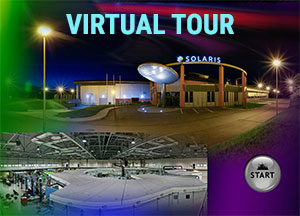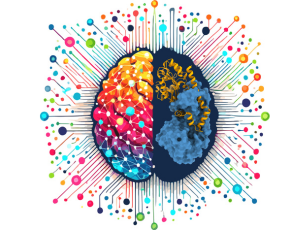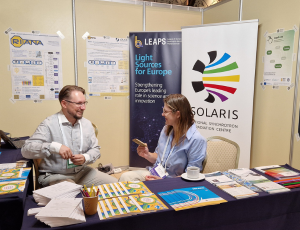 Web Content Display
Web Content Display
SOLARIS centre
 Web Content Display
Web Content Display
Seasonal changes in air pollutants in Krakow in synchrotron research
A group of scientists from the Faculty of Physics and Applied Computer Science, AGH University of Science and Technology: dr hab. eng. Lucyna Samek, professor at AGH, Ph.D. eng. Paweł Wróbel, and students eng. Patryk Grzywa and eng. Filip Baran, and doctoral student of the AGH Doctoral School, master Romisaa Gamal Mahmoud Abdelrman, conducted interesting experiments using the ASTRA research line. The aim of the research was to identify chemical compounds present in PM2.5 air pollution. Samples for testing were collected at the AGH station in Krakow in summer and winter in 2018/2019 and 2020/2021 to detect seasonal variability and compare whether the ban on burning coal and wood for heating purposes introduced in Krakow in September 2019 contributed to a change in the nature of pollution air dust.
The average annual concentration of PM2.5 in Krakow decreased by 25% in 2020/2021 compared to 2018/2019. The concentrations of elements, ions and black carbon were determined, and then the sources of PM2.5 emissions were identified using Positive Matrix Factorization modeling. Two main factors influenced the characteristics of air particulate pollution in both periods. These included the introduction of a ban on the burning of solid fuels in Krakow in September 2019 and restrictions related to the COVID-19 pandemic in March 2020. The share of emission sources in the mass of PM2.5 was determined. Additionally, the following emission sources have been identified: street dust/construction works/industry/soil, inorganic secondary aerosols, traffic emissions and combustion of solid fuels. However, it was not possible to determine the oxidation state of the tested elements in PM2.5.
During the dedicated measurement time, using XANES, we wanted to examine the oxidation states of elements such as sulfur, chlorine, zinc, iron and chemical compounds with the above-mentioned elements present in dust. Such research will allow to observe changes in the characteristics (oxidation degrees of elements and their chemical compounds) depending on the season (summer and winter seasons) and changes depending on the year of PM2.5 sampling at the AGH station (2018/2019 and 2020/ 2021). This will allow us to follow the dynamics of changes in pollutants and factors in the area of the city of Krakow and determine the sources of air dust pollution emissions. XANES measurements provided a broader and deeper insight into the samples, which enabled the identification of chemical compounds present in air dust and the examination of pollution source profiles. Using the existing research methodology and measurements, scientists were not able to obtain accurate information about the sources of air pollution.
Measurements made using the ASTRA beamline allowed for the recording of XANES spectra of sulfur, chlorine, potassium, iron and zinc measured at the K absorption edge. XANES spectra provided information about the chemical state and chemical compounds characteristic of the summer and winter periods in PM2.5. A preliminary analysis of the spectra showed that bisulfates are present in the dust in winter and sulphates in summer. Further analysis of the spectra will help determine the sources of emission. Moreover, the obtained result showed variability of dust characteristics depending on the year of sampling. Additionally, an important aspect of the measurements performed is the fact that so far there are no XANES data available for potassium and zinc and limited XANES data for chlorine. To our knowledge, the research by a group of scientists from the AGH University of Science and Technology is the first application of this type of XANES for PM2.5 analysis in Poland.
The users would like to express their special thanks to Dr. Alexey Maximenko (supervisor of the ASTRA beamline) with whose support the measurements could be carried out.
Author: dr hab. inż. Lucyna Samek profesor AGH
Photos: Joanna Kowalik, Lucyna Samek



